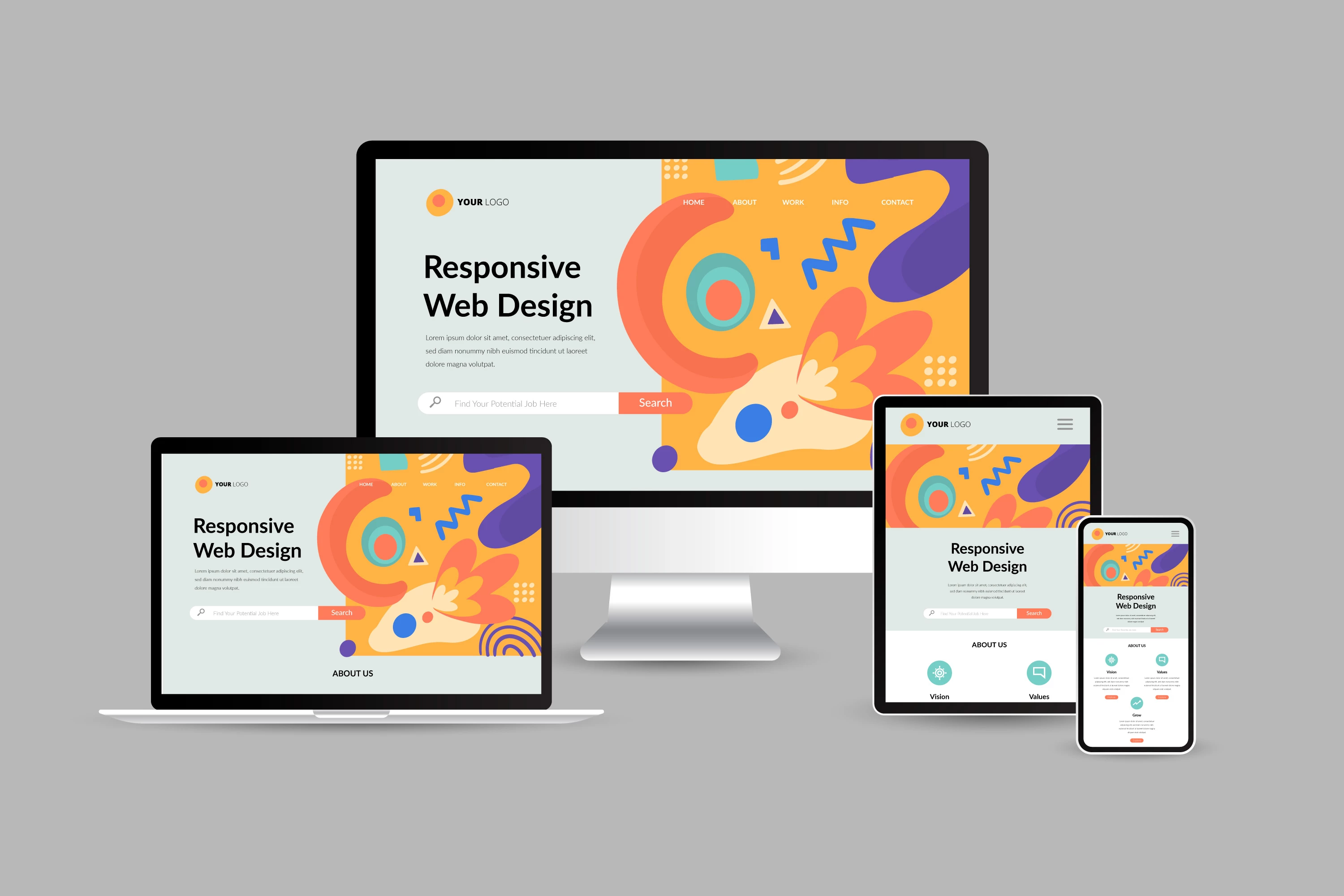Increase Your Business With Receptive and User-Friendly Web Design
In an era where electronic communications determine customer habits, the importance of responsive and user-friendly web layout can not be overstated. A well-structured website not just fits various gadgets but additionally improves the total individual experience, cultivating better interaction.
Value of Responsive Design
In today's digital landscape, a significant bulk of web website traffic stems from mobile gadgets, underscoring the crucial importance of receptive design. As customers increasingly gain access to websites through mobile phones and tablet computers, services must make certain that their online existence is maximized for various screen dimensions and resolutions. las vegas web design. Responsive style not just enhances individual experience yet also plays an important duty in search engine optimization (SEO), as internet search engine prioritize mobile-friendly sites

Along with improving customer contentment, receptive design can supply a competitive benefit. In a market where electronic interactions are critical, organizations that prioritize receptive website design setting themselves as forward-thinking, boosting their brand online reputation and eventually driving conversions.

Crucial Element of User-Friendly Design
Producing a straightforward style entails several crucial elements that enhance usability and guarantee a positive communication with the internet site. Simplicity is vital; a tidy, uncluttered design enables customers to browse easily. User-friendly navigation is another vital element, enabling customers to locate info promptly without confusion. This can be attained with clear menus, rational structuring, and consistent positioning of navigation buttons.
Additionally, legible typography plays a significant function in customer experience. Selecting legible typefaces and proper sizes guarantees that customers can quickly eat content without straining their eyes. Reliable use of color and comparison not only improves aesthetics however additionally boosts readability and ease of access for customers with aesthetic impairments.
Furthermore, incorporating interactive elements such as buttons and web links that are plainly specified and sufficiently spaced encourages individual interaction. Responses mechanisms, like hover effects or confirmation messages, additionally boost the communication by providing users with peace of mind that their activities have actually been identified.
Last but not least, optimizing load times can substantially influence individual contentment. A fast-loading site reduces bounce rates and keeps users engaged, eventually promoting a much more positive assumption of the brand name. By concentrating on these elements, organizations can develop an user-friendly design that drives success.
Advantages of Mobile Optimization
Mobile optimization is important for modern web sites, as individuals increasingly count on their smart devices and tablet computers for browsing. Customers can quickly navigate a mobile-optimized website, which boosts their overall experience and raises the probability of engagement.
Moreover, mobile optimization can lead to higher search engine positions. Internet search engine like Google focus on mobile-friendly websites in their formulas, meaning that services with enhanced websites are more probable to show up in search engine result. This exposure can drive more organic website traffic and prospective customers to business.
Additionally, mobile optimization minimizes bounce prices. When learn this here now users come across a website that is challenging to browse or slow to pack on their smart phones, they are most likely to leave and seek choices. By offering a smooth experience, companies can preserve individuals and convert sees into sales.
Enhancing User Experience
A well-optimized web site not just caters to mobile individuals but likewise substantially boosts overall user experience. By including receptive style principles, services can guarantee that their websites are available across different gadgets and display dimensions, producing a seamless surfing experience. This versatility fosters customer interaction, as site visitors are much less most likely to run into frustrating navigation issues or altered material.
Furthermore, an user-friendly interface simplifies interactions, allowing users to locate information or complete purchases with convenience. Components such as user-friendly food selections, clear calls-to-action, and visually enticing designs add to a positive experience, encouraging users to invest even more time on the website. Quick filling times are another vital element, as sluggish sites can lead to high bounce prices and disgruntled clients.
On top of that, enhancing customer experience entails taking into consideration the needs of diverse audiences. Executing functions such as alt message for pictures and ensuring high comparison in between text and history can make internet sites a click now lot more easily accessible to individuals with handicaps. Inevitably, focusing on user experience not just satisfies existing customers yet likewise attracts brand-new ones, establishing a solid structure for service development in a significantly electronic landscape.
Determining Success and ROI
Measuring success and roi (ROI) in pop over to these guys responsive website design is crucial for comprehending its effect on business efficiency (las vegas web design). To properly assess the success of a responsive web layout effort, organizations ought to develop key performance indications (KPIs) that align with their purposes. Common KPIs include conversion prices, bounce rates, customer engagement metrics, and typical session periods
Tracking these metrics through analytics devices enables services to assess exactly how well the receptive style meets individual demands across devices. A high conversion price, for instance, shows that users are not just visiting the site however are additionally taking wanted actions, such as buying or enrolling in an e-newsletter.
Organizations ought to also consider qualitative comments from customers, as this can provide understandings right into individual satisfaction and areas for improvement. By continually measuring success and ROI, firms can make informed decisions to improve their internet visibility, making sure that their responsive design methods generate optimal results and foster long-term growth.
Conclusion
